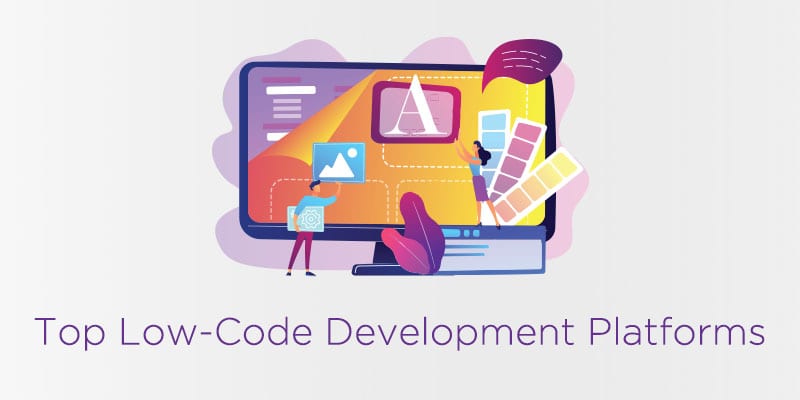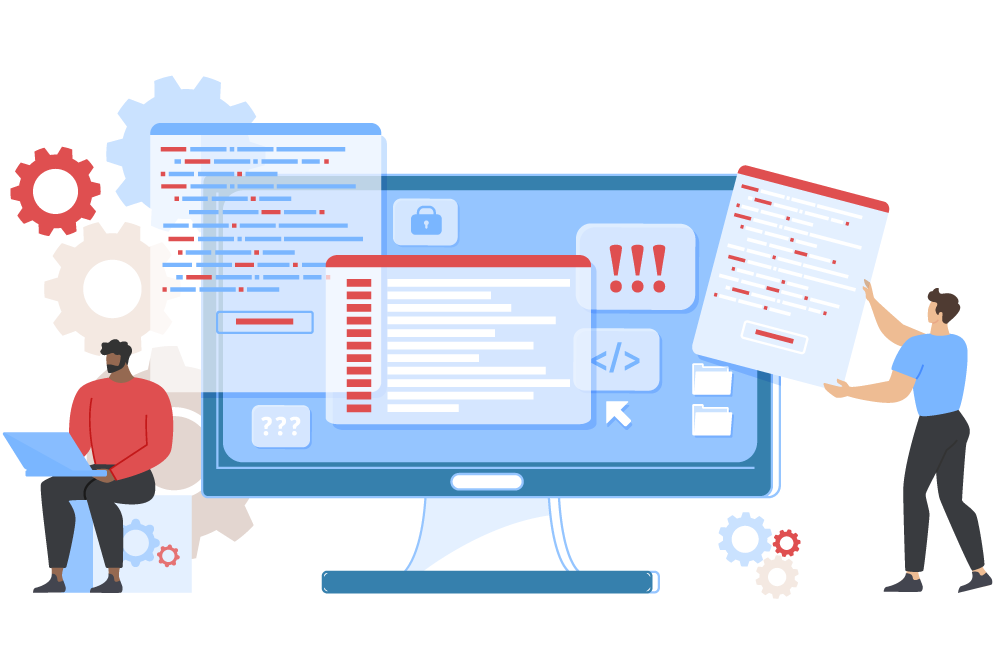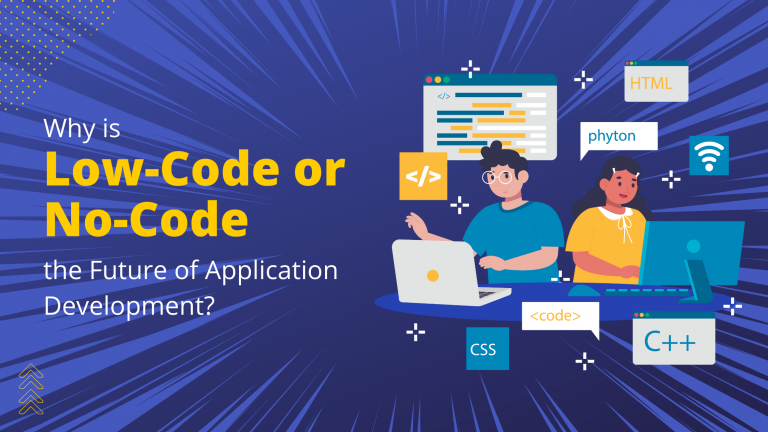Great Info On Selecting Low-Code Platform Examples
Wiki Article
Benefits Of Low-Code Application Development In Terms Of Accessibility To Non-Developers
App development that is low-code improves accessibility by non-developers (often called "citizen-developers") because of a few key factors.
Drag-and-drop Builders: Lowcode platforms include drag-anddrop interfaces to enable non-developers to create visually appealing applications, without needing codes. This makes it easier for people with no technical backgrounds to get involved in the development process.
WYSIWYG: WYSIWYG editors are "What you See is What you get" editors that permit users to design workflows and interfaces that are similar to the finished product. This makes it simpler to use and understand.
Simplified design of Workflow and Logic
Visual Workflow Modeling - Users can create business processes and logic for applications using visual flowcharts and models. This is much more intuitive than traditional programming methods.
Pre-built Logical Components: Many low-code platforms have already-built logic components (e.g. loops, conditions) which can be easily set up. This means that there is no need to code complex programs.
Templates and components that can be reused:
Templates for libraries of pre-built templates A lot of low-code platforms offer a library of the most commonly used types of applications, allowing those who are not developers a base to build upon and then alter.
Reusable Modules and Widgets Utilizing reusable modules and widgets, users can speed up the creation process, while also reducing the requirement for technical knowledge.
Tutorials and guide development:
Step-byStep Guides: Platforms will often offer guided development paths or online tutorials on-screen directions to help users who aren't developers to create applications.
Interactive Tutorials Interactive, hands-on tutorials allow users to learn through doing, improving their knowledge and confidence making use of the platform.
Integration with Existing Tools
seamless integration: Low-code platforms are designed to be integrated seamlessly with existing systems, tools, as well as software (e.g., ERP or CRM). This allows non-developers who do not have a experience in programming to create applications that can work with their current workflows.
APIs and Connectors APIs built-in and connectors ease the integration process and allow non-developers to connect their apps with external services without the need for complicated programming.
Collaboration Features:
Team Collaboration: Features such as real-time collaboration, as well as shared workspaces enable non-developers to work alongside professional developers, business analysts, and other stakeholders effectively.
Access Control Based On Roles: Users who do not develop are able to be assigned roles and access levels that allow their participation without compromising functionality or security.
Automated Testing and Debugging
Low-code platforms are usually equipped with testing and debugging software that can automatize these procedures. This makes it much easier for non-developers to check their applications work correctly.
Platform detects problems when they happen and provides solutions. This aids non-developers with solving problems.
Overall, the benefit of low-code development in terms of accessibility to non-developers is in its ability to make the development process more accessible. Low-code platforms are easy to use visual tools, guided user experiences, and allow business users to actively participate in creating, maintaining and updating applications. Take a look at the top Low-code Platform for application development for site recommendations including multiplatform mobile app development, rapid application design, app platforms, azure sql databases, cross platform app dev, paas service, app modernization, cross platform app dev, cross platform mobile app development, lowcode no code and more.

Benefits Of Low-Code Applications In Safety And Governance
Low-code software offers a variety of benefits in terms of cybersecurity and governance that are essential to ensure that all apps are managed, well-managed and in compliance throughout their lifecycle. These are the major advantages.
Unified Management Console: Low-code platform often provides a centralized dashboard where administrators can oversee and manage all applications to ensure consistency in governance throughout the organisation.
Role-Based Access Control RBAC : These platforms typically include access controls that are based on roles. They allow administrators define and enforce rules. This ensures that only authorized users can access or modify certain parts of an app.
Compliance and Regulatory Adherence
A lot of low-code platforms have built-in compliance functions. For instance, they are built in line with the standards of the industry as well as regulations and laws (e.g. HIPAA, GDPR). They offer tools and frameworks that help to ensure the applications are compliant with these standards.
Audit Trails and Logging : Audit trails, comprehensive logging and logs are usually integrated into companies which allows them to monitor changes and track access. They also help to ensure compliance of both external and internal rules and regulations.
Additional Security Measures
Data encryption: Low-code platforms often offer built-in data encryption in transit and at rest. This means that sensitive information will be protected.
Security Certifications: A lot of low-code service providers have security certificates (e.g., ISO 27001, SOC 2) that show that they adhere to the highest security standards. This provides extra security for users.
Automatic security updates for security:
Regular Patching and Updates Lowcode platforms generally handle regular updates to security. These patches protect software from the latest threats without the need for developer intervention.
Security Monitoring Tools: Tools for continuous monitoring of security are provided. They offer real-time alerts, as well as insight into security issues that might arise.
Data Governance
Data Access Policy: These systems allow companies define and enforce rules for access to data, while making certain that only authorized users are able to access data, and the data is utilized in a safe manner.
Data Masking and anonymization The built-in tools that hide and anonymize data can help protect sensitive information when working in testing or development environments.
Consistent Application lifecycle Management
Development and deployment Pipelines: Low code platforms offer integrated pipelines for development and deployment, which include security checks. They ensure security is maintained throughout the entire life cycle of an application.
Version Control: A unified version control system helps to manage changes, allowing any changes made to an application to be monitored. If necessary they can be reversed and the application's integrity maintained.
User authentication authorization
Single Sign On (SSO) Single Sign On (SSO): Supporting single sign-on and other advanced authentication methods simplifies user management while enhancing security.
Multi-Factor Authentication Numerous platforms allow multi-factor Authentication that adds an additional layer of security when logging into applications.
Monitoring of Policy Enforcement
Low-code platforms usually come already pre-defined with templates for policies to help organizations implement security and governance policies quickly.
Compliance Monitoring Tools: They provide continuous monitoring and report on the status of compliance. This allows you to identify potential issues and address them proactively.
Integrating with Existing Security Infrastructure
Seamless Intergration: Low code platforms are designed to allow seamless integration with existing security tools and equipment, like Identity Management Systems, SIEM Solutions (Security Information and Event Management), and Firewalls.
API Security API Security: API security features are built-in to allow integration with other systems, protecting information and ensuring integrity of applications.
Training and best practices
Best practices: Many platforms have guidelines for creating secure applications and provide the best practices. This helps non-developers to follow security standards.
Security Training Some low-code service providers provide security tools and training for users to educate them on how to build and maintain secure applications.
Low-code development can provide a range of security and governance benefits which ensure that apps are developed and managed in an efficient way, safe and in compliance. These platforms come with the tools, frameworks and regulatory compliance that are required to safeguard sensitive customer information, enforce policy, and ensure compliance with regulatory requirements, while also simplifying the administration and supervision over the application development process. Have a look at the recommended Enterprise application development with Low-code Platform for site tips including cloud software applications, stored sql procedures, app modernisation, developing mobile apps, develop cross platform mobile app, cross platform mobile dev, app modernisation, app platforms, microsoft azure sql, push notifications android and more.

Support From Vendors And Community Are Two Advantages Of Low Code Application Development.
Low-code platform development provides significant advantages, including support from vendors and a community support. This is crucial in ensuring successful application development as well as ongoing maintenance and constant improvement. Support for Vendors
Comprehensive Technical Support:
Dedicated Support Teams: Many low-code platforms have access to dedicated support teams that can help with technical issues, troubleshooting and help, making sure that all issues are solved promptly.
Support is available 24/7. Numerous vendors offer round-the-clock support, which can be particularly useful for businesses that operate in multiple time zones.
Training and Onboarding:
Vendors typically offer structured programs for users, such as tutorials and webinars. They might also offer training courses for certification.
Personalized Onboarding : Many providers offer customized onboarding that assist new customers implement the platform and customize it according to their specific requirements.
Regular Updates and enhancements:
Continuous Improvement: Low-code platforms providers often release periodic upgrades that add new functionality, performance enhancements, and security patches. These updates make sure that their platform is current and secure.
Feedback Integration: Vendors frequently incorporate user feedback into their development cycles, making sure that their platform is constantly evolving to meet the changing demands of its customers.
Comprehensive Documentation:
Documentation is detailed: Users are usually able to access a large and well-organized documents, ranging in terms of complexity from basic customization to advanced.
API References API documentation contains complete API references to help developers connect their low-code platform apps with other platforms.
Professional and Consulting Services
Expert Consultation : Vendors provide consultation services such as architecture design and complex implementations. They offer this service to ensure that users are able fully benefit from the platform.
Custom Development Service: Some companies will provide custom development to build functionalities or integrates for their customers which are not easily available.
Community Support
Active User Communities
Discussion boards and forums A lot of platforms with low-code have vibrant online community where users can seek help, share solutions and collaborate to find the most efficient techniques.
User Groups and Meetings: Local and virtual meetings and groups of users give you the chance to study about, network, and share experiences with others.
Collaboration and sharing of knowledge:
Community-Contributed Resources: Users often share templates, modules, and extensions that they have developed, which can be reused or adapted by others, accelerating development and innovation.
Crowdsourced Solutions: The collective knowledge and experience of a group can prove to be a useful tool in problem-solving and finding innovative solutions.
Learning and Development:
Community-Led Learning: Several communities host workshops, training sessions, and webinars that are often led by users with experience who can share their knowledge and techniques that are more advanced.
Online Courses and Tutorials Community members regularly make and share online courses, tutorials and how-to guides, enhancing the learning resources accessible to all users.
Feedback and Influence
Product Feedback Channels Community forums contain a number of channels for giving feedback to vendors. This will help in the development of features.
Beta Testing Programs Members of the community who are active could have the opportunity of participating in beta programs. This allows them to get an early view on the latest features, as well as an opportunity to contribute to the future of the platform.
Recognition and Support
Community Recognition Programs: Many vendors have recognition programs to honor the efforts of active community members, such as MVP (Most Valuable Professional) programs.
Peer Support. Community members offer peer-to-peer support. They offer their knowledge with new users and provide guidance. This creates an atmosphere that is supportive and collaborative.
Overall the combination of strong support from the vendor and an active and engaged community creates an extensive support system for development of low-code applications. It ensures that the users are able to access the resources, expertise, and collaborative opportunities to develop, deploy, and maintain their apps, ultimately enhancing the efficiency and effectiveness of their applications.
